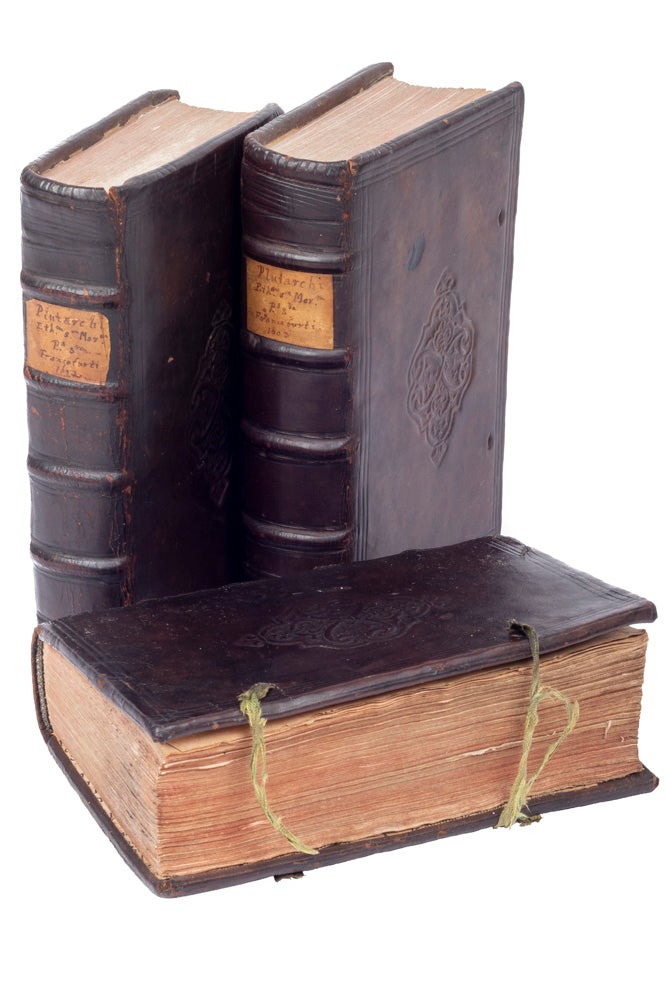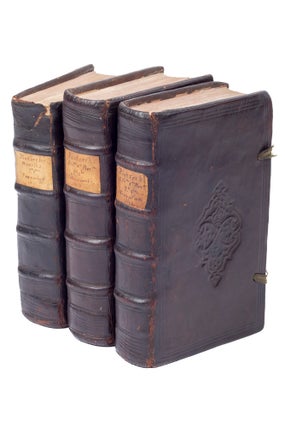Moralia…
Moralia, quæ Usurpantur. Sunt autem omnis elegantis doctrinæ penus: Id est, variii libri: morales, historici, physici, mathematici, denique ad politiorem litteraturam pertinentes & humanitatem.
Frankfurt: Typis Ioannes Saurii, Impensis Rulandiorum, & Nicolai Rothii, 1603.
Three volumes, octavo; in a contemporary Oxford binding of dark calf, blind lozenge at centre of each side, spine with hatched borders at top and tail, raised bands, manuscript paper labels; green ribbon ties only party surviving; printed waste used as pastedown (see note).
In contemporary Oxford dark calf binding
A very attractive set of a classical work in an early annotated translation by the German classical scholar Guilielmus Xylander (Wilhelm Holtzman), whose version was first published in 1572. Plutarch of Chaeronea (46-120 A.D.) was a contemporary of Tacitus and Pliny and of his two extant works, Lives and Moralia, the present work, which consists of various essays, is the rarer.
A very attractive set of a classical work in an early annotated translation by the German classical scholar Guilielmus Xylander (Wilhelm Holtzman), whose version was first published in 1572. Plutarch of Chaeronea (46-120 A.D.) was a contemporary of Tacitus and Pliny and of his two extant works, Lives and Moralia, the present work, which consists of various essays, is the rarer.
This charming example is in a very well-preserved Oxford binding of the period. One of the pieces of printed waste that the binder has used as endpapers is a page from Giles Fletcher's eulogy for Philip Sidney. The several features that identify such bindings carried out in Oxford up to the mid-17th century are: the hatching patterns, the central lozenge, the darkness of the calf leather, and the ribbon ties. Strickland Gibson wrote about them in "Early Oxford Bindings" (Oxford: Bibliographical Society, 1903), that "One very distinctive feature of nearly all Oxford bindings executed between 1580 and 1620, and of a certain number between the latter date and about 1670, is the 'hatching' at the head and tail of the back. This consists of diagonal lines…" while in more modern times David Pearson noted in "English Bookbinding Styles, 1450-1800" (London: British Library, 2005) that "Oxford binders developed a habit for two-way hatching patterns [on the board edges], finishing a row of diagonal hatching with a few rows running horizontally, or diagonally the other way; this can be a useful rule of thumb for recognising Oxford work between about 1580 and 1650 …".
Condition Report: Tear at tip of one spine.
Price (AUD): $2,850.00
US$1,854.64 Other currencies



